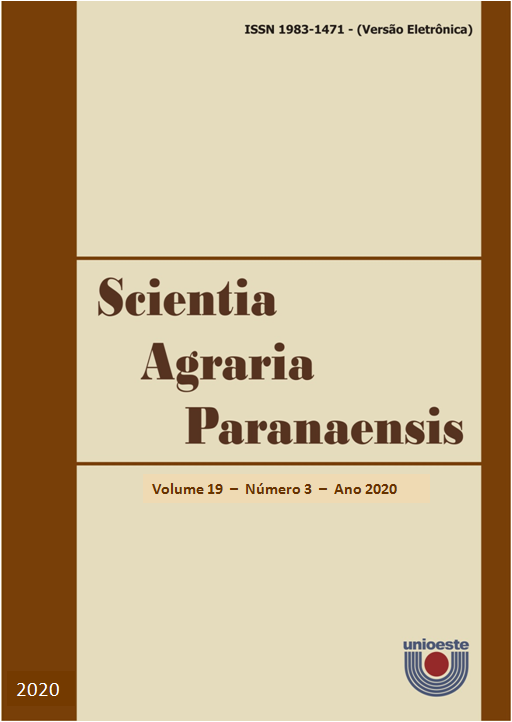Cotton response to nitrogen fertilization in the integrated crop-livestock system
DOI:
https://doi.org/10.18188/sap.v19i3.24349Resumo
Cotton has been widely cultivated in the Cerrado region, including the crop-livestock integration system under no-till. The objective of this study was to evaluate the effects of plant residues from ruzigrass [Urochloa ruziziensis (R. Germ. & C.M. Evrard) Crins] and nitrogen fertilization on nitrogen use efficiency, growth, and yield of cotton crop (Gossypium hirsutum L. R. latifolium Hutch.), cv. TMG 44 B2RF. The experimental design was randomized blocks, in a split plot scheme, with four replications. The plots consisted of three production systems: i) conventional cotton cropping in fallow area; ii) cotton cropping in the presence of straw from the shoots and roots of ruzigrass plants; iii) cotton cropping only in the presence of residues from the ruzigrass roots. The subplots consisted of five rates of N (0, 40, 80, 120 and 160 kg ha–1), applied at 30 and 50 days after seedling emergence. The presence of ruzigrass straw provided less growth and development of cotton, in addition to less N uptake by plants. The cotton cropping in the crop-livestock integration system in the presence of residues from the roots and shoots of the ruzigrass plants resulted in the greater cotton yield in the second year, demonstrating the importance of the straw formation of the cover crops for the sandy soils of the Cerrado region. The optimal application rate of N in topdressing for the cropping of cotton in succession or not with ruzigrass residues in sandy soil varies from 100 to 110 kg N ha–1.
Downloads
Publicado
Como Citar
Edição
Seção
Licença
Aviso de Direito Autoral Creative Commons
Política para Periódicos de Acesso Livre
Autores que publicam nesta revista concordam com os seguintes termos:
1. Autores mantém os direitos autorais e concedem à revista o direito de primeira publicação, com o trabalho simultaneamente licenciado sob a Licença Creative Commons Attribution que permite o compartilhamento do trabalho com reconhecimento da autoria e publicação inicial nesta revista.2. Autores têm autorização para assumir contratos adicionais separadamente, para distribuição não-exclusiva da versão do trabalho publicada nesta revista (ex.: publicar em repositório institucional ou como capítulo de livro), com reconhecimento de autoria e publicação inicial nesta revista.
3. Autores têm permissão e são estimulados a publicar e distribuir seu trabalho online (ex.: em repositórios institucionais ou na sua página pessoal) a qualquer ponto antes ou durante o processo editorial, já que isso pode gerar alterações produtivas, bem como aumentar o impacto e a citação do trabalho publicado (Veja O Efeito do Acesso Livre).
Licença Creative Commons
Esta obra está licenciada com uma Licença Creative Commons Atribuição-NãoComercial-CompartilhaIgual 4.0 Internacional, o que permite compartilhar, copiar, distribuir, exibir, reproduzir, a totalidade ou partes desde que não tenha objetivo comercial e sejam citados os autores e a fonte.


